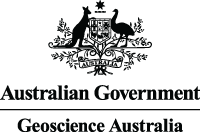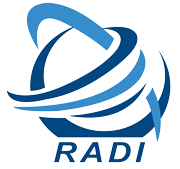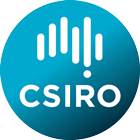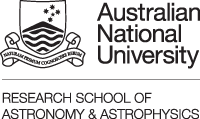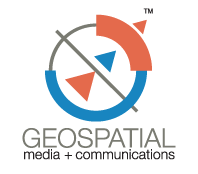Media Releases
- World experts on Earth and extra-terrestrial observations gather in Australia to discuss the future of our planet
- NASA 2014 space mission will help fill gaps in climate change knowledge for a water-secure future
- Lessons learnt from the Black Saturday bushfires: tracing a path of devastation, recovery and resilience
- CSIRO to transform Australia’s Earth observation capabilities for a bigger and better future
- Geoscience Australia: mapping the future of remote sensing
Media
This page hosts media releases, updates and other relevant information for journalists wishing to report on the 2013 International Geoscience and Remote Sensing Symposium.
Attending the Symposium
Registration is free for journalists, who may register on-site at the Melbourne Convention and Exhibition Centre, with appropriate credentials, from 7:30 am on Monday 22 July. However, those planning to attend may also register by sending an email to the address at the bottom of this page prior to arrival to save time.
IGARSS 2013 provides an on-site media working room for credentialed journalists covering the event. The media room is located on the ground floor of the Melbourne Convention and Exhibition Centre, offering resources including wireless Internet access. This room is for registered journalists only.
Remote media
Journalists unable to attend the Symposium will still have access to a range of media resources, as well as the full assistance of the Media Manager (see bottom of page for more details).
About the 2013 International Geoscience and Remote Sensing Symposium
The official program of the 33rd International Geoscience and Remote Sensing Symposium (IGARSS 2013) runs from Sunday, July 21 to Friday, July 26, 2013 at the Melbourne Convention and Exhibition Centre in Melbourne, Australia. The event is hosted by the Geoscience and Remote Sensing Society - one of the 38 technical societies of the Institute of Electrical and Electronics Engineers (IEEE). With 430,000 members, IEEE is the largest professional society in the world.
Held annually as the biggest and most significant meeting in the global remote sensing community, this year’s event draws more than 1,300 scientists, decision-makers and other experts from 66 countries. Presenters are discussing the latest in cutting-edge research and technology - sharing new advances in instrumentation, techniques, models and the applied programs of their institutions.
The research and findings presented at the Symposium are vital to informing international and national policies for “Building a Sustainable Earth Through Remote Sensing,” which is the theme of this year’s event, selected to emphasise the issues that most affect the Earth's environment and the human impact on the planet.
This is the second time Australia has hosted IGARSS; the previous was hosted in Sydney, 2001.
Key Issues
The general public can access the data from some 160 imaging satellites in space. Some of these are stationed at a distance to monitor a fixed region on Earth, others orbit the planet at a closer distance, to monitor the details of the surface in fine resolution - sometimes down to an area of only 40 cm across.
Satellites can detect heat, salt, chemicals, atmospheric humidity, pollutants, rainfall, ocean surface temperature and winds, as well as many other variables across the Earth's surface. The data collected provides information to the technology and services that we depend on - for example, weather conditions and forecasts, predictions for natural disasters such as fire and floods, communications systems, and air traffic routes - what we take for granted as “normal” in everyday society.
IGARSS 2013 covers a full range of remote sensing science and technology, with the aim of “Building a Sustainable Earth” featuring more than 1,450 talks and posters.
Program topics
Some of the scientific and technical themes at IGARSS 2013 focus on remote sensing research results and applications to meteorology, forests, agriculture, emergency response, water management and oceans, just to name a few. Experts will be on hand to discuss topics such as Australia's vital role and strength in the remote sensing community, including the shift to using time-series imagery to improve community resilience to natural hazards.
The full program can be accessed via the official conference app: https://itunes.apple.com/au/app/2013-ieee-international-geoscience/id659694063?mt=8
From the app, you can then search by speaker, day or theme for sessions and personalise a timetable of the events you wish to attend.
The full program is available at: http://www.igarss2013.org/RegularProgram.asp
Also, an abstract search is available at: http://www.igarss2013.org/Papers/Search.asp
Alternatively, please contact the IGARSS 2013 Media Manager (details at bottom of page) for further details on speakers and their areas of expertise.
Relevance of remote sensing to Australia
With the recent release of Australia's Satellite Utilisation Policy, Australia will certainly play a stronger role in this area of science and technology in the years to come. In fact, Australia is exceptionally skilled at analysing Earth observations from space and putting this to practical use. According to the Commonwealth Scientific and Industrial Research Organisation (CSIRO), the Australian Government currently spends around $100 million per annum on both attaining Earth observations and its associated data processing. There are now more than 100 active Federal and State government programs, representing an additional Government investment of approximately $950 million. However, the direct dependence on Earth observation data is estimated to contribute more than $3 billion per year to Australian Gross Domestic Product (GDP). Increased government spending on Earth observation data can realistically be expected to provide the 30:1 return on investment implied by the ratio of government spending to GDP contribution. (Reference: http://isulibrary.isunet.edu/opac/doc_num.php?explnum_id=488)
Media contact
Melissa Lyne
Email: melissa.lyne@gmail.com
Phone: +61 415 514 328


 IGARSS13
IGARSS13 @IGARSS2013
@IGARSS2013